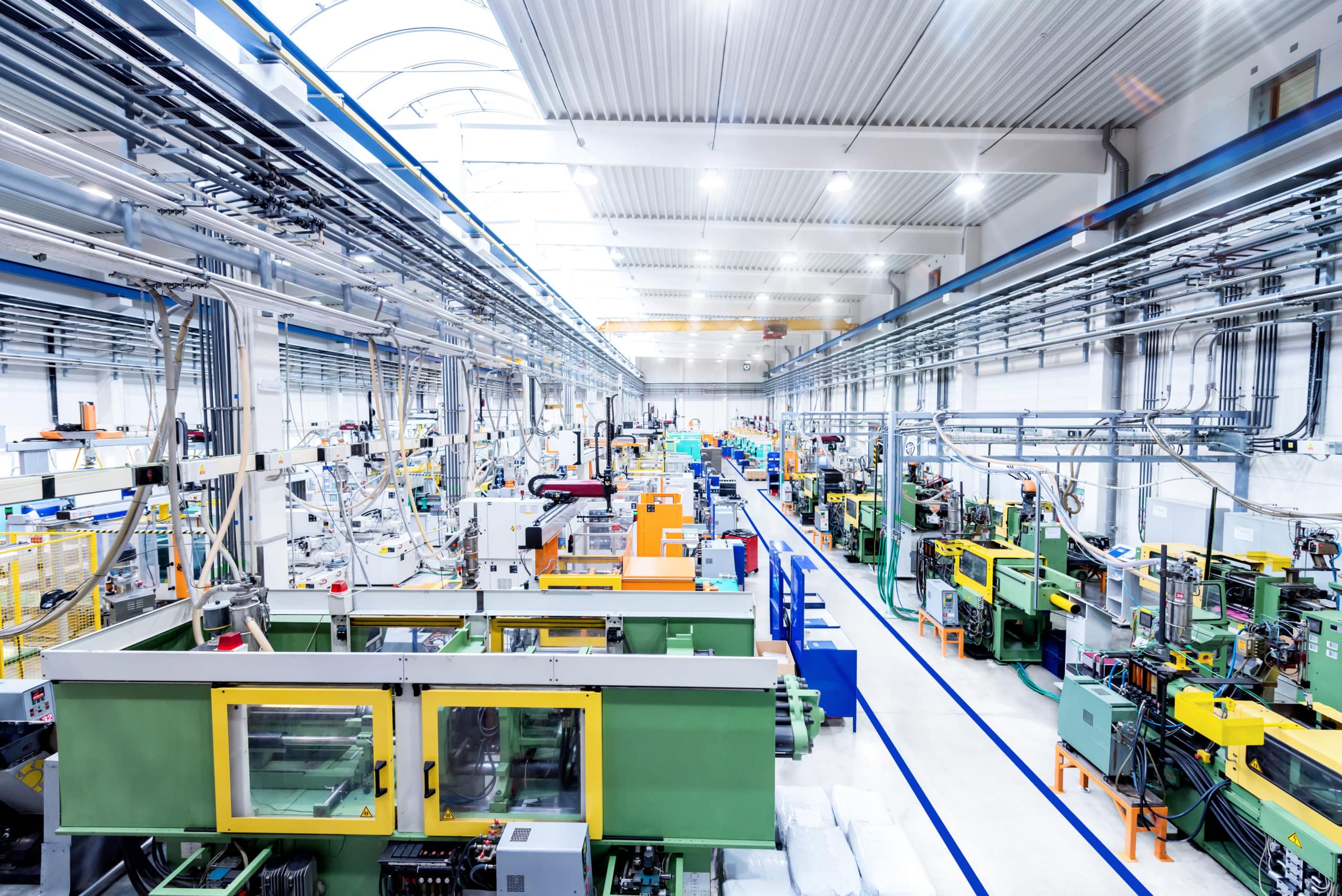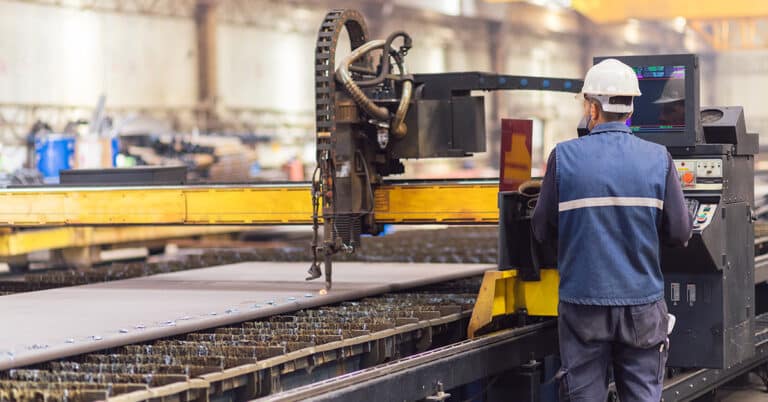Improving operational performance and efficiency is likely at the top of the list for every manufacturer. Often, however, the practical focus shifts to more day-to-day concerns instead of the big-picture assessments and actions that are required to improve operational efficiency. Getting the most out of your equipment, personnel and processes is a time and effort investment that is well worth what you put into it. If you’re ready to improve operational efficiency at your facility, utilize the list we created below and start off on the right foot!
What is operational efficiency in manufacturing?
What is operational efficiency in manufacturing? Simply put, it’s how well your operation makes a product, based on the raw materials and machinery that you have. Measuring the efficiency of your process can take many different shapes, but it ultimately entails measuring, comparing and tracking specific metrics.
For plastics manufacturers, some important metrics to consider are how much raw material you waste during purges, product changeovers, scrap and defects. Any amount of waste is, by definition, an inefficient process.
The goal is for 100% of your input material to be used and transformed into your final product.
Other pieces of the puzzle are how efficiently your machines run, how often there are breakdowns, how maintenance is handled and so on. Knowing how to improve operational efficiency in manufacturing is a result of proper tracking and analysis of your metrics.
How to calculate operational efficiency in manufacturing
In the world of manufacturing, there’s a simple and ubiquitous calculation that manufacturing businesses use: your total operating expenses divided by your total revenue. In other words, all the money you spend making your product, and how much money you make selling your product.
Understanding how to calculate operational efficiency in manufacturing is the first step in perfecting your operation from an efficiency standpoint.
At a high level, this calculation can show you two critical flaws in your business. You can quickly see if you’re spending too much on your operation or if you’re making too little in sales. The answer to either of these scenarios can dramatically change how you run, manage and maintain your operation.
In the end, measuring operational efficiency in manufacturing will teach you enough about your operation to start making meaningful changes, if needed.
Increase operational efficiency with these 7 steps
1. Implement and increase automation. If your automation practices and systems are years or decades old, you may be surprised by what the current automation landscape can offer. Automation is one of the most effective ways to improve operational efficiency. Today’s systems use technology and data to be “smarter” and more powerful than ever. Whether replacing controllers and components, integrating automation with “old-iron” equipment, or implementing additional technology to be even more collaborative with human workers, reviewing your current automation state and identifying opportunities is an ideal place to start in order to improve operational performance.
2. Maintain a focus on safety. Safety is your number 1 responsibility to workers. It also plays a major role in an efficient facility. Employee injuries and equipment malfunctions require downtime — sometimes for the entire facility — and will typically require equipment repairs, maintenance, time off, and a wealth of other resources in reviewing and (if necessary) rectifying what went wrong. By maintaining a company-wide focus on safety, you can avoid these problems.
3. Train and retrain. Employee training covers a broad range of areas: best practices, company-specific information, safety and more. The saying goes, “knowledge is power,” and in a manufacturing facility, it is especially true. Be sure that all employees have been recently trained and updated in best practices for machine operation, maintenance and safety — as well as any other areas pertinent to your operation.
4. Keep up with maintenance. Improperly maintained machines are the enemy of efficiency. Neglected equipment breaks down more often, does not operate at peak performance, and can pose danger to workers. Consider adhering to a preventive maintenance schedule, rather than a reactive approach. Operational efficiency can also be greatly improved through predictive maintenance practices that use equipment performance data to identify potential issues early on, creating a more targeted and effective maintenance practice in your organization.
5. Artificial intelligence. As companies turn to Industry 4.0 and 5.0 best practices, they’ll start to evaluate how automation plays into their operation. For most manufacturing companies, artificial intelligence (AI) can be an invaluable tool. AI can be trained to work with your specific process, noticing small discrepancies and making logical decisions in fractions of a second. How AI integrates into your existing workflow largely revolves around how much automation you want and how much insight you want into your machines. As a simple example, AI can track how your machines are performing and predict maintenance tasks or spot potential defects before your product even gets to its inspection phase.
6. Review the facility floor layout. For related processes to work together most effectively, the facility floor should be laid out in a planned, intentional way. If you’ve added equipment and capabilities over the years, your floorplan may not be optimized, and you might not be operating as efficiently as you can. Assess your processes, workflows, and current layout, then determine whether different locations for equipment may be worth the time investment.
7. Define goals. With an efficiency goal in mind, you and all of your employees can have a concrete target to work toward. Benchmark your current efficiency performance metrics, such as cost per part, accepted pieces per cycle, relevant failure metrics, average downtime, overall equipment effectiveness (OEE), etc. Then, decide how you would like to see those numbers improve over several time periods — for example, six months, one year and three years. Creating a vested interest in improving these metrics across the facility will yield better results than an undefined efficiency goal.
Manufacturing efficiency vs. productivity
Manufacturing operational efficiency is different from manufacturing productivity — although some companies use the words interchangeably, efficiency looks at the quality of your product, while productivity looks at the quantity.
For example, a productive manufacturer might fabricate a million units a year, but they have a 20% defect rate, so they’re only selling 80% of their manufactured inventory. A different manufacturer who focuses on efficiency makes 800,000 units a year, with a 1% defect rate. Both companies are selling roughly the same amount, but the “productive” operation is wasting a ton of time and money with an inefficient process.
As a result, their calculated operational efficiency is going to be much worse.
Are you ready to improve operational efficiency at your facility? For over three decades, ATS has helped manufacturers across the globe improve industrial asset performance and production output through a variety of equipment maintenance and MRO services. From predictive maintenance strategy implementation, to technical training, to MRO asset management, we’re here to help make your factories run better. To learn more about how we can help you improve your plant performance, visit our website or contact our maintenance specialists today.






